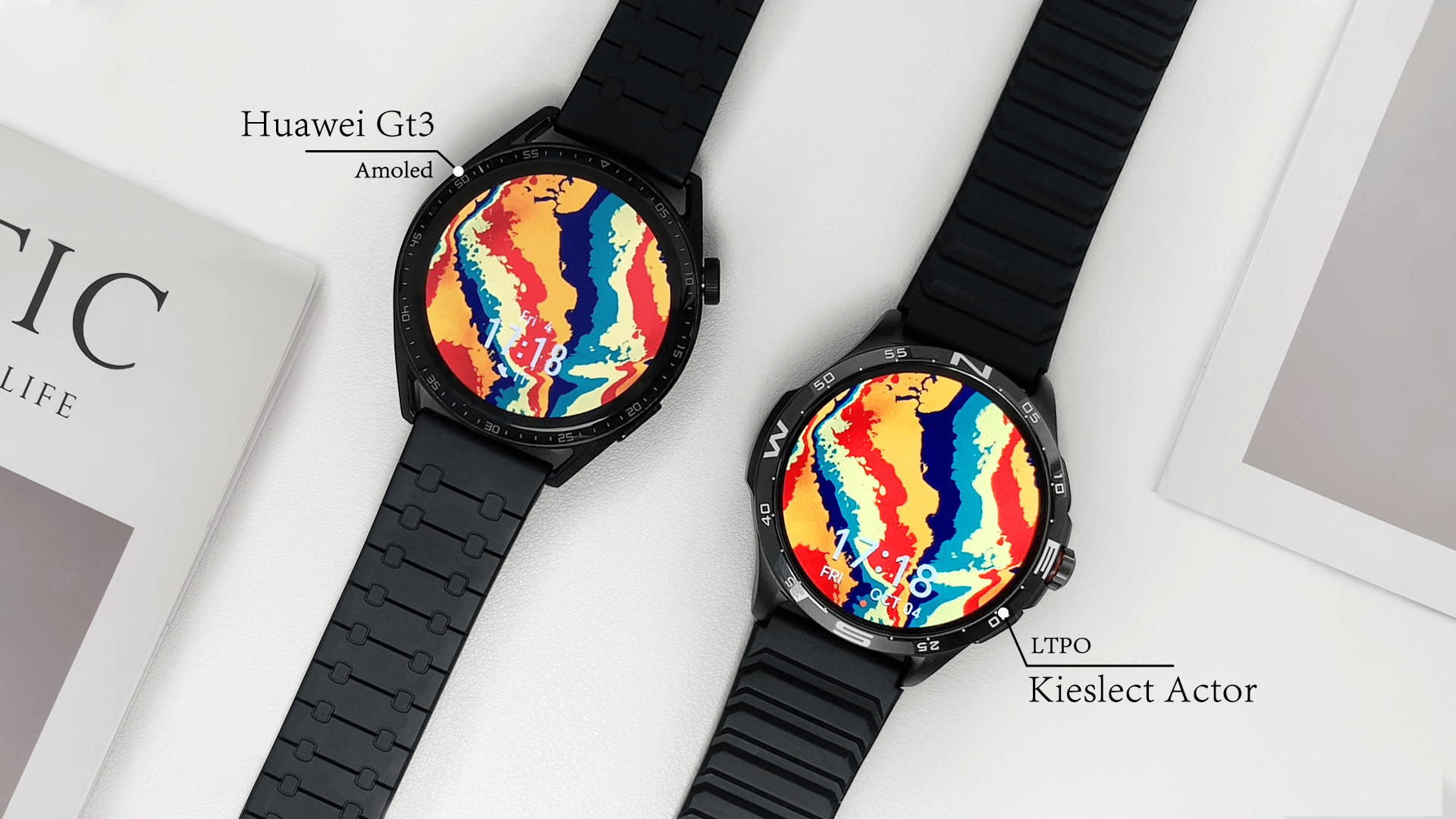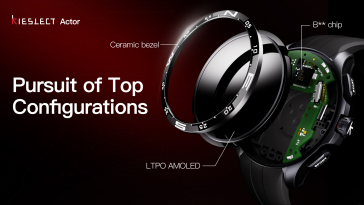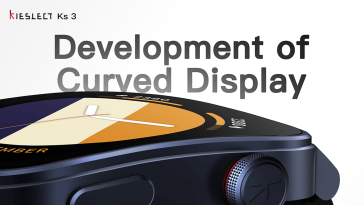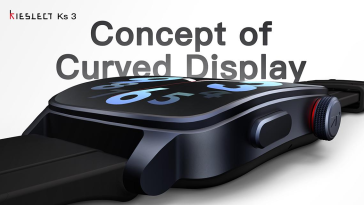In this article, we will continue where we left off last week and further explore LTPO to deepen everyone’s understanding of it.
Q: What are the differences between LTPO display and Amoled display?
A: As demonstrated in the comparison, the most noticeable difference between the LTPO display and AMOLED display is in their visual quality. Setting the same watch face on two devices—one featuring the Kieslect Actor with an LTPO display and the other with a Huawei GT 3 using an AMOLED display—both at 100% brightness under identical lighting conditions, it becomes evident that the Kieslect Actor offers a brighter and clearer image. The LTPO display showcases more saturated and vivid colors, while also being more eye-friendly and consuming less power during prolonged use.
Q:As of the release of Kieslect Actor at the end of August 2024, how has LTPO display developed on smartwatches?
A:Since the introduction of LTPO displays in smartwatches in 2019, a total of 12 models have adopted this advanced technology by the release of the Kieslect Actor on August 8, 2024. Kieslect has become the first brand outside of tech giants Apple, Samsung, and Huawei to integrate LTPO displays.
Among these 12 models, five high-end smartwatches (highlighted in red bars) feature both LTPO displays and ceramic bezels. While the prices of the other four models range from $399 to $799, users can experience the Kieslect Actor with both premium features for just $98—an incredible value for high-end performance!
Kieslect is proud to contribute to writing the development story of LTPO technology in smartwatches, pushing the boundaries of display innovation. Looking ahead, Kieslect is dedicated to setting even higher standards, driving continuous breakthroughs not only in screen display technology but also across non-display fields, ensuing the brand stays at the forefront of the smartwatch industry.






